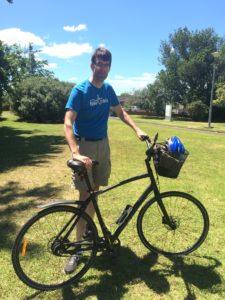 Max Robitzsch, our infrastructure guru – although he prefers the milder term ‘infrastructure liaison’ – might just be the hardest-working man in Auckland bike advocacy. He’ll tell you himself that even after a long day at work as a transport engineer, getting a new set of design plans to pore over is ‘a little bit like candy.’ (His very patient partner once said, when asked what Bike Auckland meant to her: ‘Max on the computer.’)
Max Robitzsch, our infrastructure guru – although he prefers the milder term ‘infrastructure liaison’ – might just be the hardest-working man in Auckland bike advocacy. He’ll tell you himself that even after a long day at work as a transport engineer, getting a new set of design plans to pore over is ‘a little bit like candy.’ (His very patient partner once said, when asked what Bike Auckland meant to her: ‘Max on the computer.’)
Max’s fingerprints are on almost every bike project that’s happened in the city over the last 8 years, all the way up to LightPath and beyond. He’s Cycleway Man, our secret weapon, our second shift. The story is, Max burns the midnight oil, then Barb gets up with the birds and takes over, and so on around the clock, giving Bike Auckland a formidable 24/7 presence.
If you’ve ever met Max in person, the first thing you notice is that he’s really tall (he also gives splendid hugs, which are a bit like being embraced by a very friendly tree). The second thing you spot is the trace of an accent. Over brunch at a bike-friendly cafe, I set out to discover a bit more about where this international man of mystery came from, how he got here, and what keeps him going.
Did you grow up with bikes?
Of course. We were a cycling family, like almost any normal German family. Kids start out on their parent’s bike, maybe sitting on a seat behind the handlebars, and then you get your own bike eventually.
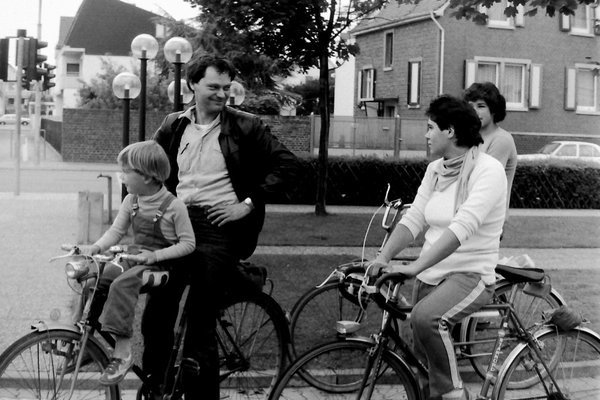
Learning to ride a bike even helped me learn to distinguish left and right. My parents taught me, ‘When you go out the driveway, you need to stay on that side of the road’ (this was Germany, so we rode on the right-hand side of the street). So whenever I needed to remind myself which was left and which was right, I would picture our driveway.
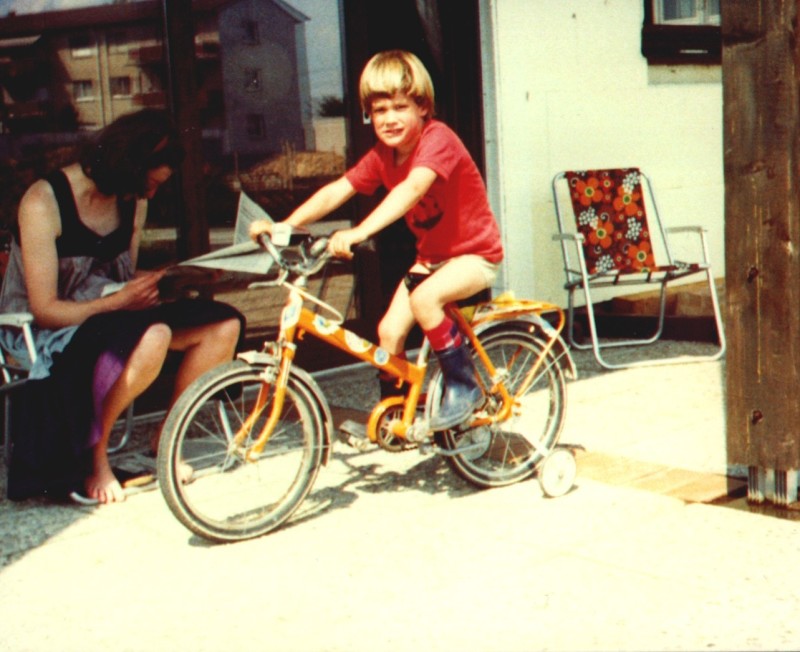
What was your part of Germany like to cycle in?
German cycle facilities probably aren’t as good as you’d picture for a country with around 10% cycling mode share, but what makes it work is a combination of having some cycle facilities plus back routes, slower speed zones, and drivers who are willing to be careful… and people on bikes being just a lot more accepted on the road.
There were cycle lanes on the main street of our village, but otherwise we just rode on the streets. I didn’t ride to primary school because it was just around the corner, but I rode to intermediate school, in the countryside, about 2-3km away via a shared path through the fields. Probably a third of the kids biked to that school, from all directions.
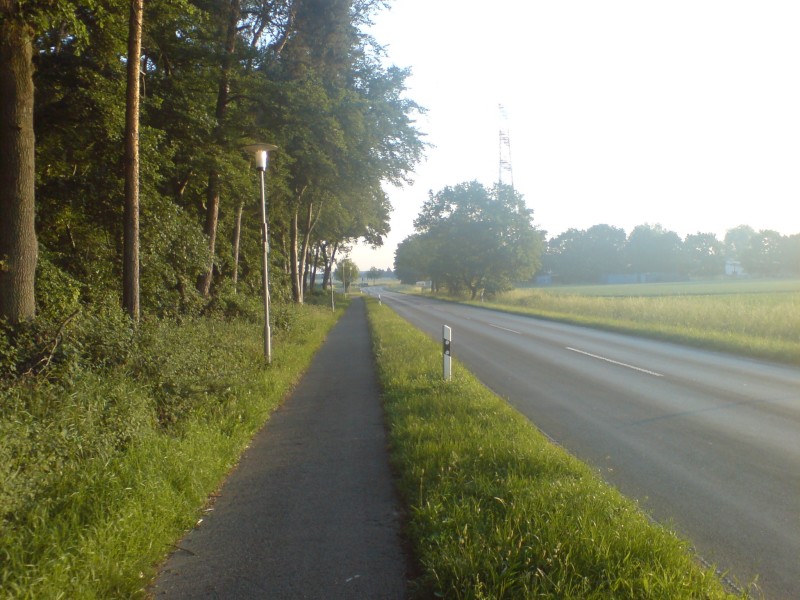
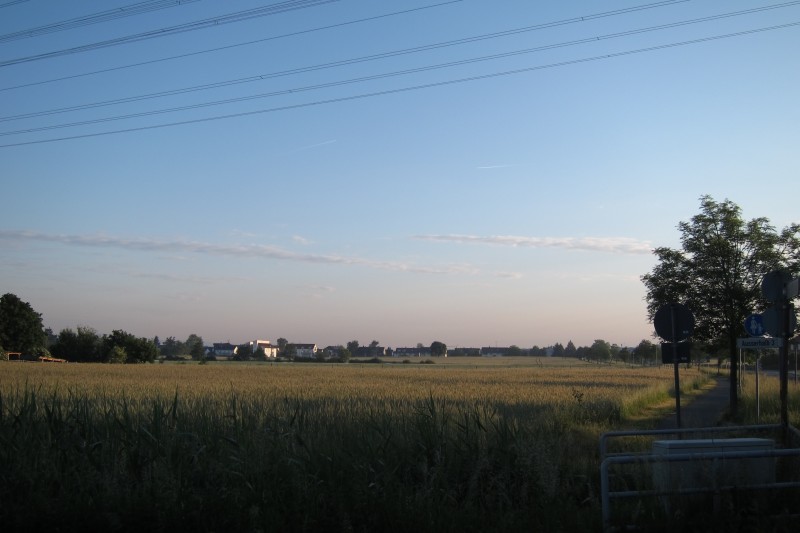
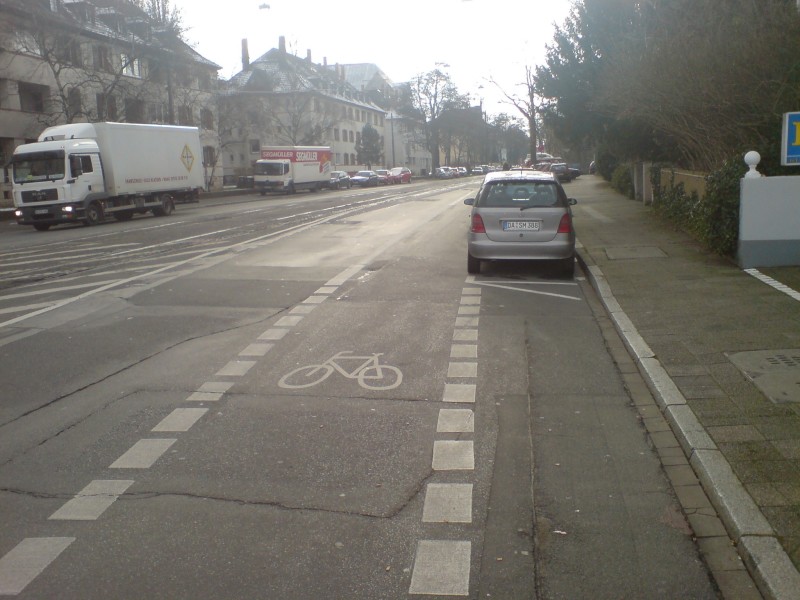
When I was twelve, I started cycling to high school in the nearest city, about 12 km each way, on a mix of cycleways, quieter roads through the villages, and farm roads (which in Germany are almost all public access). I still remember the first day of high school: me and a friend set off early, and then found ourselves in deep fog, at a crossroads in the middle of these fields with no signposts, wondering which way to go. I guess we figured it out!
I’d bike to school sometimes with other kids, sometimes on my own. There were strawberry fields along the way, so you could sneak some of those in season. In the woods on the way, there was a ladder up into a tree, to a hunting blind. Sometimes I’d climb up there; I’d take a book up with me and just sit and read for a while on the way back home from school.
I rode that route for years – after high school, I moved to the city to study and so I would come back to the village to visit my parents along the same paths.
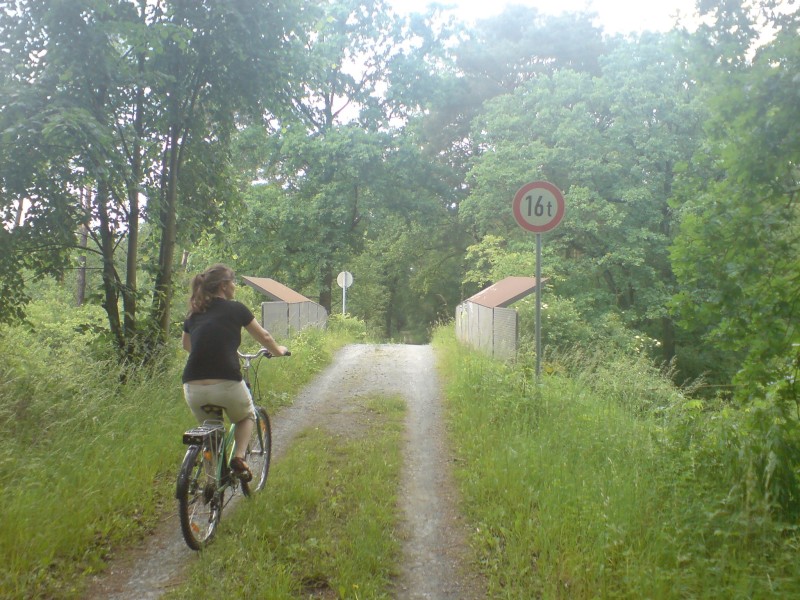
That sounds idyllic! So what on earth brought you to New Zealand?
After I finished my studies, I wanted to travel. I’d planned to go to China with a friend, but the friend bailed out. New Zealand sounded interesting, and I spoke good English already, so it sounded like somewhere I could handle on my own.
On my second or third day here, I was in a backpackers in Golden Bay, and a guy was filling out a residency application. I looked at the brochures and noticed that the shortlist of ‘skill shortage occupations’ specifically listed transport engineers. By the time I got to Christchurch a week later, I’d decided I’d come back. So I finished my travels, bought a book on ‘How to write a CV NZ-style’, went back to Europe, got my documents together, and applied for a few jobs. I had three offers in three days after returning from interviews. I took the job which sounded best (as transport engineer with TDG), and I’m still with them ten years later – so that was obviously a good choice!
Did you choose Auckland to live in, or was that by chance as well?
At first I thought Christchurch might suit me, as I’d lived a good part of my life in a village of 7,000 people, then studied and lived in a city of 150,000. I liked Christchurch, but I’m happy I ended up here. I realized that in Germany, if you go another 50km beyond my local city, there are 2-3 million people in the area – so it was more like Auckland in that way.
After the first 1 year of my initial contract, I could have moved cities to another branch office, but I’d fallen in love with Auckland and didn’t want to leave! Transport planning was my way of learning about the city. I did projects all over the place; spent time cycling in the weekends, riding long distances, exploring all over.
I also wrote or helped on a couple of hundred Wikipedia articles about Auckland, mainly about buildings and infrastructure. Something about Wikipedia appealed to my feeling of wanting to improve things. Looking at something and thinking ‘we can make that better.’
How was it for cycling, in those days?
Ten or so years ago, cycling still wasn’t big on anyone’s radar, at Council or the government agencies. My company did a lot of work for private developers. I remember once doing some work for a private schoool, helping design their entry facilities, and I mentioned in a meeting we could look at making it easier to cycle there. I was literally laughed at. That was the environment, then – it was ‘ridiculous’ to think of cycling as a transport option.
Initially, I didn’t cycle much at all. I lived in the central city – on Nelson St – and walked almost everywhere. I was gobsmacked at how troublesome the city was even for walking. Then I moved to an apartment in Grafton. By my third or fourth year, it was pretty clear I would be staying here, and then I met my partner, which confirmed it. We looked at suburbs that had good public transport and cycleways – which pretty much ruled out 3/4 of the city! – and settled in Mt Albert. The move was mainly so my partner could have a garden, and we could keep a cat – but otherwise, I do still miss my lovely central city apartment with the Rangitoto views!
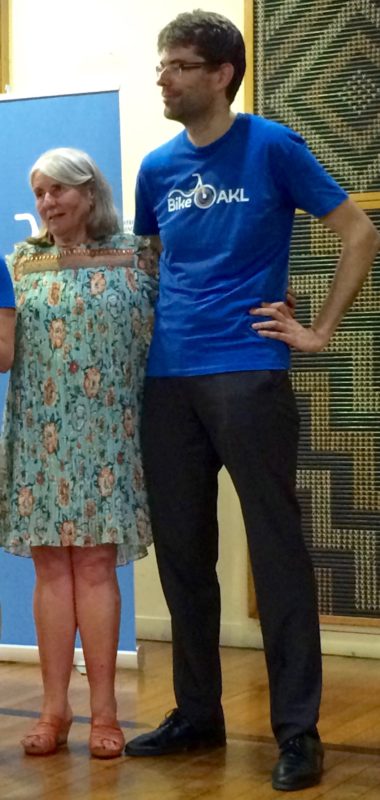
How did you get into bike advocacy?
I hadn’t done cycle advocacy in Germany at all. It wasn’t on the radar; it was never so bad that it felt like something had to be done; you just got through.
What actually pushed me into it here was reading an opinion piece by Brian Rudman in the Herald, about how cycling was an outmoded form of transport and on the way out, good riddance, it’s had its day, let it die, and so on. [Ed note: there are quite a few in the archives, but maybe it was this one calling bikes an ‘antiquated form of locomotion’?] Knowing that he wasn’t even the extreme end of that sentiment… I really felt like it was time to put my enthusiasm to work. I felt I had to do something.
Around the same time, there was an article in the Herald talking about Bevan Woodward (who went on to found GetAcross, which then became the SkyPath project) and Cycle Action Auckland. So in a way, you could say the Herald was doubly responsible for getting me into advocacy. Anyway, I went along to a Cycle Action meeting in Freeman’s Bay…
And the rest is history?
Ironically, my very first submission was about cycle lanes on Beach Rd – which were cancelled shortly thereafter! But we were eventually on the right side of history on that one.
In the first few years, I would joke ‘during the days I build carparks, and at night I advocate for walking and cycleways.’ I wrote submissions on budget plans, to get more money for cycling. The first time I spoke to a Council hearing was, funnily enough, about rail electrification… we were supporting the ARC putting up the fuel tax to pay for electrification. I was in advocacy for about 3 years before the supercity came along.
How has the task of advocacy changed in the time you’ve been doing it?
It’s a lot easier these days, and the way of working has changed quite a lot in recent years. It used to feel more like standing on the outside shouting to get heard by the inside. We made submissions, we kept at it, and we must have found that sweet spot between being pushy enough and knowledgeable enough to start having actual conversations with the people building things, rather than someone just ticking a box to say they’d received a submission.
I always wanted Cycle Action / Bike Auckland to be in that sweet spot between activism and professionalism. We try to have our fingers in every pie. We obviously can’t sort everything, notice every project, fix every problem. So the job is also a little bit about educating the council… even just getting them to think twice about walking and cycling before planning something. It’s still hit and miss some days. There are so many project managers, some we’ve worked with, some we haven’t… sometimes there are just too many things for us to do quite as much as we want.
How do you keep up with the work?
It’s a constant deluge of infrastructure designs and projects… and every time you comment, there’s a chance that two weeks, a month, a year later they’ll come back to you for a meeting about it – which is a good thing, but it generates work and work and work. I can’t let it go. Firstly, because I’m so passionate about it. Secondly, having made some input, I can’t not follow it up – persistence is what gets results! Even when it’s tricky to fit in with work and private life. I’m lucky that my employer lets me fit this in around my work, and that my partner is so understanding.
It always comes back to the art of the possible. You want to push the boundaries, but you don’t want to be the crazy person whose proposals get binned right away. You always want to be one or two steps ahead of where people are.
Of course, by the time a thing gets built years later, something that looked like a real achievement suddenly isn’t state of the art any more. And you think, does that mean we should try to be three steps ahead? It’s a bit frustrating, but it comes with the territory.
Also, a lot of the work I do is on routes I might never ride, or might ride once every few years. It’s like the work I did on Wikipedia; being able to use your enthusiasm for something good and positive, not for profit. My Bike Auckland/Cycle Action email folder (which contains about 35,000 emails covering 8 years) is called ‘Society’. It might sometimes feel a bit pretentious, but I’m doing something not just for myself, it’s for the community.
What’s the best part of being a bike advocate?
The best part? For me, the poring over the plans. The reason you can always get to me to look at a plan at midnight if there’s feedback due the next morning is – getting design plans, for me, is a little bit like candy. If the cycling stuff is good, it’s a happiness boost, and I can support it and push it forward. If it’s bad, then there’s a combination of righteous fury and that feeling of ‘hey, I can help make this better’. So either way I get a kick.
Then there’s seeing it come together, seeing it built – although I don’t really relax until the bulldozers are out, given the way projects get delayed or cancelled. But yes, there’s a good feeling in being able to say ‘this is there in part because of me’.
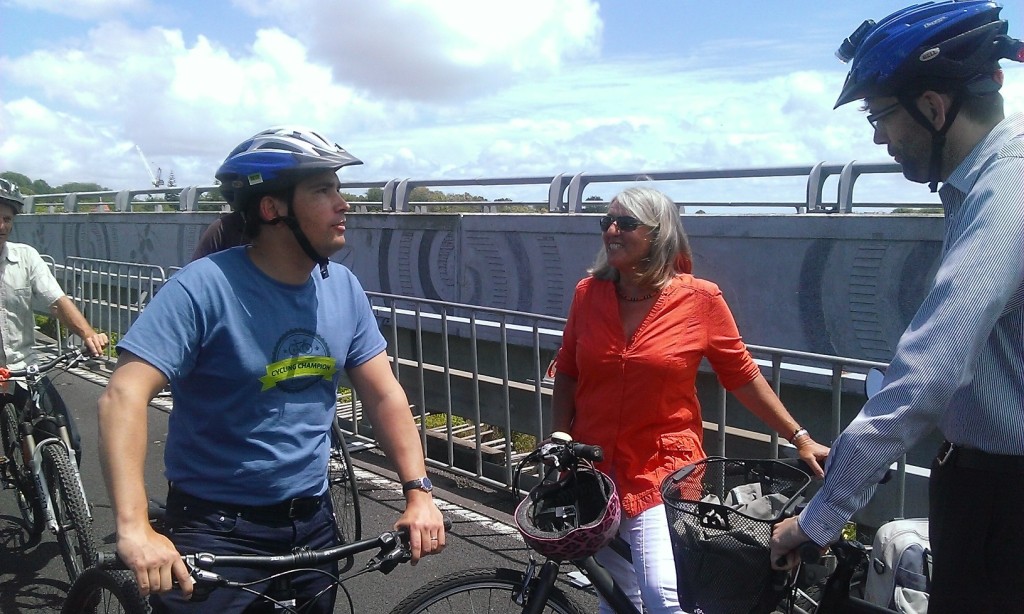
Like the Pink Path! That’s your baby, right?
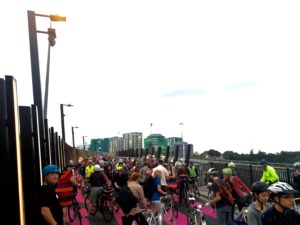
That project had so many fathers and mothers! I’m very proud of it.
The slightly paradoxical disappointment is that we didn’t manage to get it done as a pilot-project quick fix. We pitched it as an experiment, and they went with the high quality standard solution. So the final result is really fantastic, but it isn’t a template for doing a temporary change. That sort of thing still isn’t in NZTA or AT’s DNA.
For me, the more boring part of Nelson St was more exciting. It’s not a flashy arty urban design… but making an extremely hostile road suddenly safe for cycling is, in my opinion, even more revolutionary than taking a bridge and painting it pink. OK, the pink was really revolutionary and actually I love it! But you know what I mean.
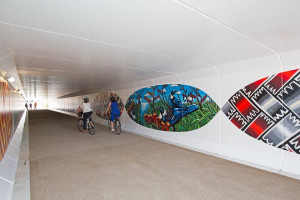
I’m also proud of smaller things people might not notice, like traffic islands on Ian McKinnon Drive that stop cars cutting the corner. And the Te Atatu underpass – Cycle Action / Bike Auckland were the only ones who submitted on that, and I wrote 90% of the submission. Obviously the decision, the design, and the construction were carried out by lots of people. But helping make that sort of thing happen is the pinnacle of advocacy work.
What’s the hardest part of bike advocacy?
Second-guessing yourself. I try to be as profesional as I can, but there are so many projects on the go, and I have a private life too – so sometimes I only have 20-30 minutes to write a submission. Or I’d love to spend 2-3 hours reading something in-depth, but I only have time to skim it.
The other tricky thing is what I think of as ‘compromise vs compromised’. How much should you push for? Are you willing to risk something not happening at all, if you ask for more than is seen as reasonable?
A middle-of-the-road design might make it through the approval process, and then maybe you can convince the planner to go for the higher quality or more expensive solution – but if you start with that, the project could get bogged down before you even begin. Lots of projects don’t get cancelled, they just get delayed forever for a rescoping or a review, which is almost worse.
What’s next on your infrastructure wish list?
I’d love to see an arterial road with a proper protected cycleway on each side (Carlton Gore Rd is protected for only 40%, and the intersections don’t work that well). I hope it will be Great North Road and K Road.
Also, urban cycleway building currently has a main arterial focus, for lots of good reasons – but I would love to see more slow-speed zones in residential areas. They’re not as exciting for the engineer in me, they’re a lot more about the softer and more people-oriented side of advocacy, but they are so important to get people cycling in big numbers.
Sounds like you’re in this for the long haul?
I think I’ll be in this advocacy thing for the next 5 years minimum, if not much longer.
It’s really nice to be a bit of an ‘institutional memory’ for an organisation. When a project or an issue comes along, you can scan through your mental files and your electronic files (of which I have about 6GB at this point!), and say, ah yes, I’ve worked there, done something there, five or ten years ago. Sometimes that’s frustrating, because nothing has improved. And sometime it’s like, wow, we’ve come a long way!
I don’t have kids, but I see my work as making the city better for future generations. I have three nieces and a nephew, via my partner’s family, and they’re my direct connection to the next generation. The two oldest love cycling, and every time they visit the city we go out for a big ride. There’s a good chance they’ll go to university in Auckland. I’d really hope that by that time, we’ve got the city far enough along that getting around by bike is a thing they don’t have to steel themselves for – they can just do.




